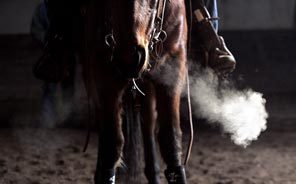 I always enjoy reading horse training articles and stories about amazing horsemen. I am always inspired by the things they have learned from the thousands of horses they’ve handled, and thrilled when they share their knowledge with us. Here are some horse quotes from some of the best horse trainers in the world.
I always enjoy reading horse training articles and stories about amazing horsemen. I am always inspired by the things they have learned from the thousands of horses they’ve handled, and thrilled when they share their knowledge with us. Here are some horse quotes from some of the best horse trainers in the world.
“It’s really amazing what a horse will do for you if he understands what you want. And it’s also quite amazing what he’ll do to you if he doesn’t.” —Bill Dorrance
This reminds me of one day when I was trying to get my black gelding Crowe to sidepass…he clearly didn’t understand my cues, which made me increasingly frustrated, and resulted in him rearing with me and scaring me enough that I stopped bothering him about sidepassing, and gave up on the whole idea. I have always looked back on that moment as a time when I should have been more patient and set a smaller goal, such as yielding his hindquarters. Starting out with some groundwork excercises would have helped the horse understand my cues, and then incorporating those cues from the saddle would have given him a better chance of understanding what I wanted. I was asking too much of him, and he could have easily thrown me.
“The rider needs to recognize the horse’s need for self-preservation in mind, body, and the third factor spirit…….he needs to realize how the person’s approach can assure the horse that he can have his self-preservation and still respond to what the person is asking him to do.” —Tom Dorrance
I love this quote, because it reminds me of the mindset of teamwork that is necessary to have to be a good horse trainer. When you look at things from the horse’s point of view, you start to understand why they balk sometimes, or why they spook. And you learn to not push a horse at the wrong time, because you understand their nature.
“When you really hurry a horse or cow, you just get to the wrong place faster.” — Seth Woods
“The horse is doing one of two things: he’s doing what he thinks he’s supposed to do, or he’s doing what he thinks he has to do to survive.” — Ray Hunt
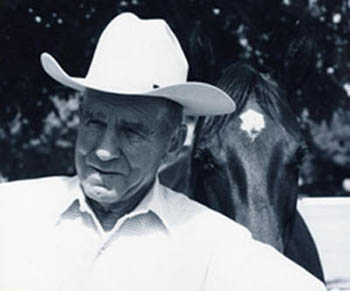 “Once the horse gets to responding, then you try to get the response you are asking for with less. You try to cut down what you are applying and get more response with less pressure, until it almost gets to be just a thought.” Tom Dorrance
“Once the horse gets to responding, then you try to get the response you are asking for with less. You try to cut down what you are applying and get more response with less pressure, until it almost gets to be just a thought.” Tom Dorrance
This is the horse fact that makes the spade bit possible. The type of horse that can wear such an odd-looking contraption in its mouth with ease is a horse that has been so fine-tuned that it doesn’t require anything more than a thought and a touch of the rein to get the horse to turn. I think a lot of people don’t put the time into their horses that’s necessary to ever get them to this point of communication.
The average thought pattern goes something like this: “My horse doesn’t work well in this snaffle bit….so I’m going to try a gag bit or a twisted wire bit so it’ll get his attention better.” That’s the wrong way to look at it. What you should be doing is working your horse consistently in your plain ol’ snaffle bit and using the “practice makes perfect” approach. Changing up bits before a horse is ready is a quick way to ruin a good horse. When he gets light and responsive and perfect in a mild bit is when it’s alright to consider moving to a little edgier bit.
Think of it like a kid learning to write. Start out with a crayon and don’t worry about it being perfect. Let the kid practice with something easy. When the writing gets to looking like letters, let him start using a pencil….still pretty easy with an eraser to allow room for a few mistakes. Then when there aren’t any mistakes, move to a pen. And someday when a beautiful script is flowing out of that pen, it’s time to invest in one of those fancy fountain pens with a plumed feather on it, because at that point, the penman is no longer just a writer, he is an artist. That’s how it is with bits and horses. Always start out easy, and only progress when the horse has progressed.
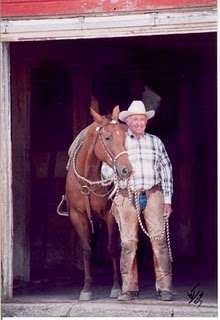 “Asking a horse ‘What can you do for me?’ is backwards.” —Ray Hunt
“Asking a horse ‘What can you do for me?’ is backwards.” —Ray Hunt
This kind of thinking—putting the horse’s feelings first—pretty much sums up the natural horse training mindset. Natural horsemanship is not about buying the carrot stick and rope halter from some big-name trainer. It is a way of thinking when it comes to handling horses, and giving them credit for being conscious, thinking, and feeling creatures. In the old days, if the treatment of horses wasn’t outright abusive, it was unthinking at best. Even my dad has treated horses as nothing more than a machine or tool used to accomplish a task. Everything was done to streamline the workload on Dad’s ranch, and while he wouldn’t view himself as harsh or unnecessarily rough on his horses, he would term the ways of modern trainers as “coddling”. Dad never even asked a horse “What can you do for me?” He told it what to do and expected immediate obedience. That’s the old way, and I’m so glad it’s becoming more and more obsolete.
Horses are so ready to give, and able to learn, that if you use a little patience, extend a little kindness, and put in a whole lot of work, the return on your investment will astound you.
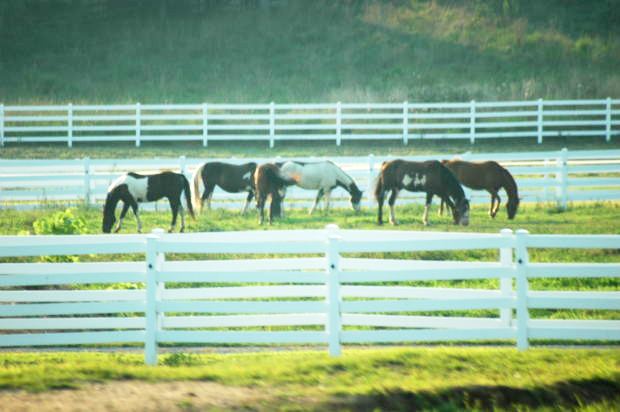
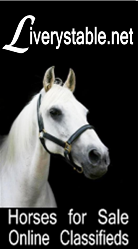
{ 2 comments }
I figured out how to sign up for comments.. finally! I so so so loved this post. It makes complete sense to me and I am on that road to understanding and communicating with my horses! Thanks for this.
I so so so loved this post. It makes complete sense to me and I am on that road to understanding and communicating with my horses! Thanks for this.
these quotes are great, inspiring, and so true!